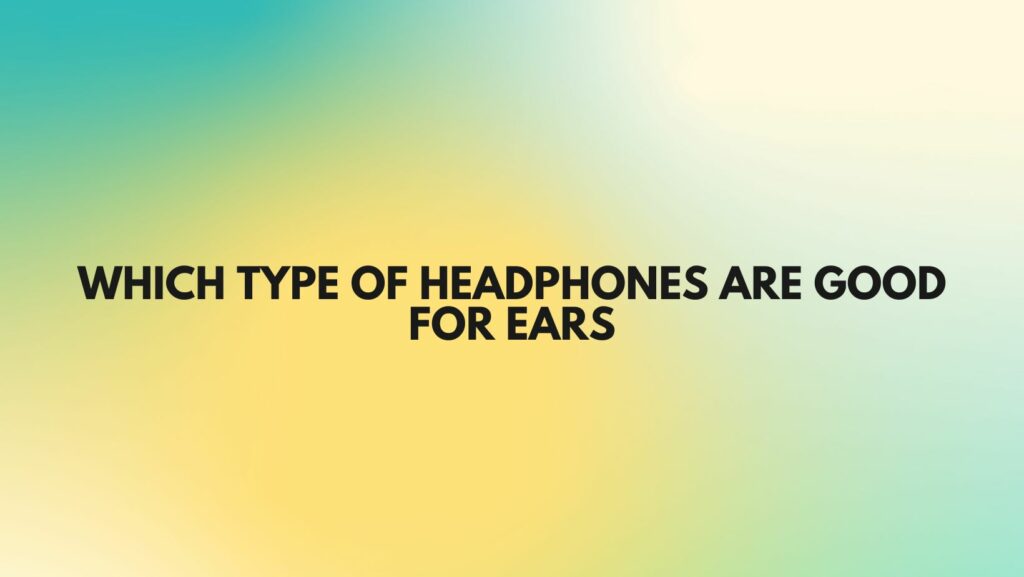Selecting the right headphones goes beyond sound quality and style; it also involves considering their impact on ear health. Prolonged headphone use can potentially lead to discomfort, hearing fatigue, or even long-term damage if not chosen wisely. In this informative article, we’ll explore the various types of headphones that are good for your ears and how to prioritize ear health when making your selection.
- Over-Ear Headphones: Over-ear headphones are known for their comfort and ability to distribute pressure more evenly around the ears. Their large ear cups typically enclose the ears without exerting excessive pressure on the earlobes. This design helps reduce discomfort during extended listening sessions and minimizes the risk of ear fatigue.
- Open-Back Headphones: Open-back headphones feature ear cups with perforated backs that allow air and sound to pass through. This design reduces the buildup of air pressure inside the ear cups, which can contribute to a more natural and comfortable listening experience. Open-back headphones also help prevent the sensation of “closed-in” ears, making them suitable for long-term wear.
- Wireless or Bluetooth Headphones: Wireless or Bluetooth headphones offer freedom of movement and eliminate the hassle of tangled cables. By removing the need for physical connections, wireless headphones reduce the risk of accidentally yanking or pulling on the cable, which can cause discomfort or damage to the ears. Opt for wireless headphones with long battery life to minimize interruptions during use.
- Noise-Canceling Headphones: Noise-canceling headphones use advanced technology to actively block out external noise, allowing you to enjoy your audio at lower volumes. By reducing the need to crank up the volume to drown out background noise, noise-canceling headphones help protect your ears from potential hearing damage. They’re especially beneficial in noisy environments like airplanes or crowded public spaces.
- In-Ear Monitors (IEMs) with Proper Fit: In-ear monitors (IEMs) provide excellent noise isolation and can deliver high-quality sound directly into the ear canal. However, it’s crucial to ensure a proper fit to avoid discomfort or potential damage to the ear canal. Choose IEMs with multiple ear tip options to find the size and shape that best suits your ears. Properly fitting IEMs can provide a secure seal without excessive pressure.
- Volume Limiting Features: Some headphones come with built-in volume limiting features that cap the maximum volume output. These features are particularly useful for protecting your ears, especially for children or individuals prone to listening at high volumes. Consider headphones with volume limiting capabilities, especially if you’re concerned about long-term ear health.
Conclusion: Prioritizing ear health when choosing headphones is essential for maintaining comfort and preventing potential hearing damage. Consider factors such as headphone type, fit, noise-canceling capabilities, and volume limiting features to minimize the risk of ear fatigue or discomfort. Remember to take breaks during prolonged use and listen at moderate volumes to safeguard your ears for years of enjoyable listening ahead. By selecting headphones that prioritize ear health, you can enhance your audio experiences while maintaining optimal ear comfort and well-being.


